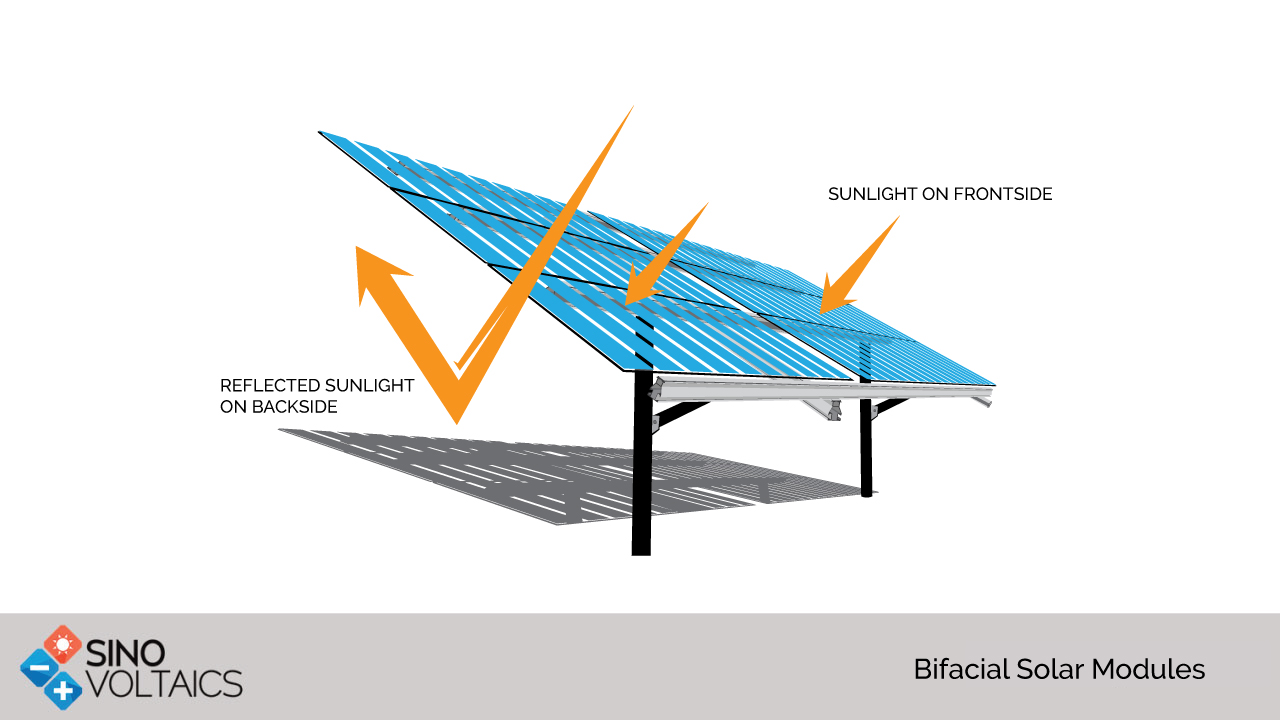Bifacial Solar Modules
Bifacial modules i.e. solar cells that generate power both from front and the rear are becoming common these days as they are able to harvest more power compared to the traditional solar modules. Bifacial solar modules offer many advantages over traditional solar panels. Firstly, power can be produced from both sides of the module. Secondly, they are durable because both sides are UV resistant, and potential-induced degradation (PID) is also less when bifacial module is a frameless one. Thirdly, the balance of system (BOS) cost is also less as power can be generated in a smaller array footprint from two sides of bifacial modules. There are many companies in the market that work in bifacial modules currently including LG, LONGi, Lumos Solar, Prism Solar, Silfab, Sunpreme, Trina Solar and Yingli Solar.
How do bifacial solar modules work?
In Bifacial cells the design is such that the entry of light occurs from both sides.  In these modules, power is generated with direct radiation striking the front PV module and diffused radiation striking the rear PV module. Bifacial modules in a solar plant have demonstrated efficiencies in the range of 31-27%, with standalone bifacial modules reaching an efficiency of approximately 34%. Bifacial modules come in many designs like framed, frameless, dual-glass, and others that use clear back sheets. Most of them use mono-crystalline cells, but polycrystalline designs are common too. But the main important thing is that power is produced from both sides. The frameless, dual-glass modules expose the backside of cells but are not bifacial. The True bifacial modules have contacts/bus bars on both the front and rear of their cells. Performance factors in bifacial cells The performance of bifacial modules is governed by a few key factors.
In these modules, power is generated with direct radiation striking the front PV module and diffused radiation striking the rear PV module. Bifacial modules in a solar plant have demonstrated efficiencies in the range of 31-27%, with standalone bifacial modules reaching an efficiency of approximately 34%. Bifacial modules come in many designs like framed, frameless, dual-glass, and others that use clear back sheets. Most of them use mono-crystalline cells, but polycrystalline designs are common too. But the main important thing is that power is produced from both sides. The frameless, dual-glass modules expose the backside of cells but are not bifacial. The True bifacial modules have contacts/bus bars on both the front and rear of their cells. Performance factors in bifacial cells The performance of bifacial modules is governed by a few key factors.
- Albedo of the installed unit: Albedo is defined as the ratio of reflected light to incident light. A highly reflective surface results in more solar irradiation hitting the rear PV module, thereby raising the overall energy generation of the bifacial module.
- Local climate: Just like mono-facial PV modules, bifacial modules are also impacted by local climates i.e. by the intensity of solar radiation. But a major plus of these cells is that the occasional lower level of solar irradiation still contributes as the diffused (reflected) component of the sun received on the rear side. Therefore, even if the weather is less sunny, power can still be generated as the rear PV module is always generating.
- Elevation: Bifacial modules should be elevated enough above the ground.
The height at which power saturates is function of the time of the day, the albedo, the light received etc.
- Optimal Tilt angle: The optimum tilt for a bifacial module has to be designed so as to capture a big fraction of the reflected irradiation. Use of trackers is suggested so the modules can track the sun’s movement across the sky, enabling them to stay directed to receive the maximum possible sunlight to generate power.
